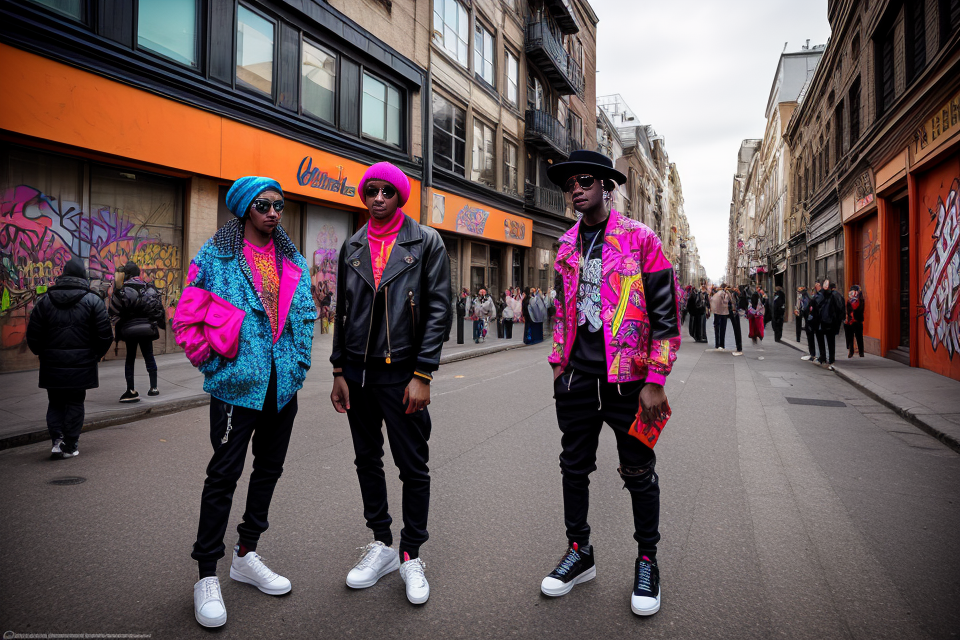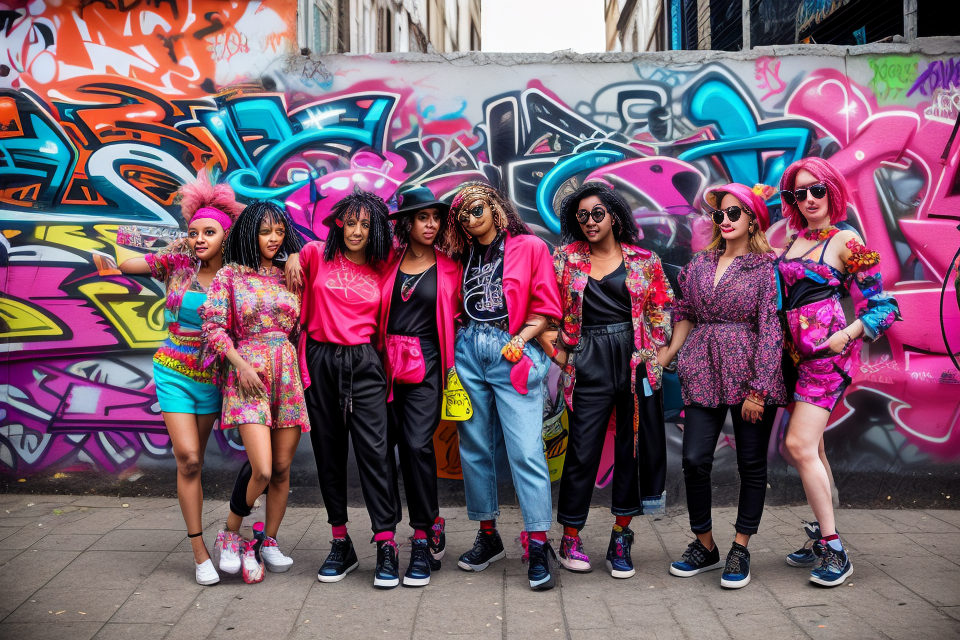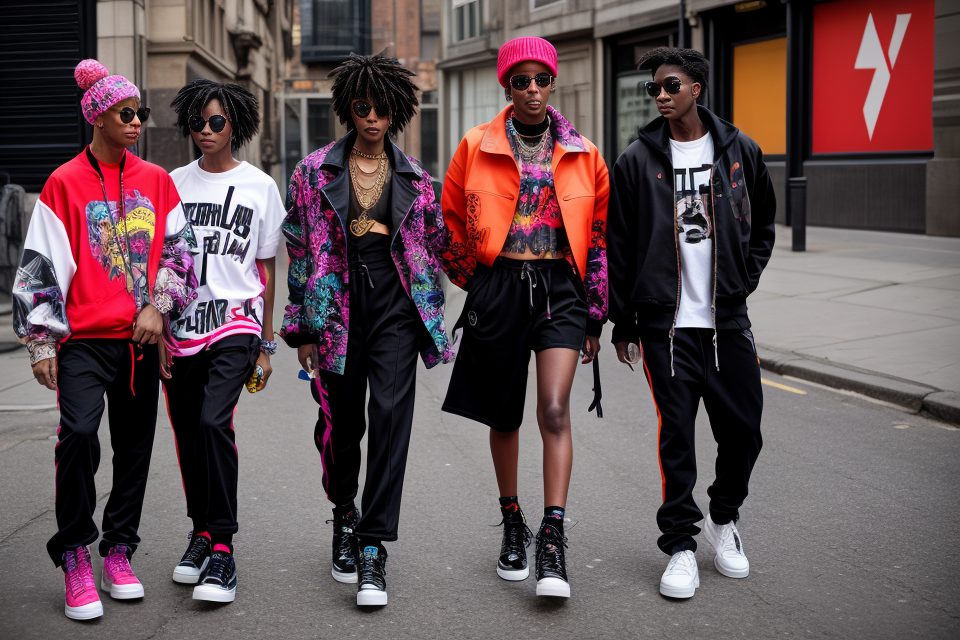
When Did Street Style Start? is a question that has puzzled fashion enthusiasts for decades. It’s a topic that has sparked numerous debates and discussions, as well as inspired countless articles and books. But what exactly is street style, and when did it start? To answer these questions, we must take a deep dive into the origins of urban fashion.
In this article, we will explore the evolution of street style from its humble beginnings to its current status as a global phenomenon. We will examine the factors that contributed to its rise, including the influence of music, art, and culture. We will also look at the impact of social media on the popularity of street style, and how it has become a key component of modern fashion.
So, whether you’re a fashion aficionado or simply curious about the history of street style, this article is for you. Get ready to embark on a journey through the streets of urban fashion and discover the answer to the question: When did street style start?
The Roots of Street Style: A Historical Perspective
The Evolution of Urban Fashion
From Working Class to High Fashion
Urban fashion has come a long way since its humble beginnings in the working-class communities of industrialized cities. In the early 20th century, urban fashion was largely influenced by the practical needs of working-class individuals who required clothing that was durable, affordable, and suitable for their daily activities. However, as time passed, urban fashion began to evolve and incorporate elements of style and self-expression.
The Influence of Subcultures
Subcultures played a significant role in the evolution of urban fashion. Subcultures such as punk, hip-hop, and skateboarding developed their own unique styles and aesthetics, which in turn influenced the broader urban fashion scene. These subcultures often used fashion as a form of self-expression and rebellion against mainstream culture.
The Rise of Designer Brands
As urban fashion continued to evolve, designer brands began to emerge and gain popularity. Designers such as Ralph Lauren and Calvin Klein helped to elevate urban fashion from practical, working-class attire to high-fashion statements. They introduced new materials, cuts, and designs that were both functional and stylish, appealing to a wider audience.
The Impact of Globalization
Globalization has had a profound impact on the evolution of urban fashion. With the rise of international travel and the internet, urban fashion has spread around the world, blending different styles and aesthetics. This has led to a greater diversity of fashion choices and a more globalized fashion industry.
The Spread of Urban Fashion Around the World
As urban fashion continued to gain popularity, it began to spread around the world. Cities across the globe adopted their own unique styles, blending elements of local culture with international trends. Urban fashion became a symbol of globalization, representing the fusion of different cultures and styles.
The Blending of Different Fashion Styles
As urban fashion continued to evolve, it began to blend different fashion styles from around the world. Designers and fashion influencers drew inspiration from various cultures, creating a more diverse and eclectic fashion scene. This blending of styles has helped to create a truly global urban fashion industry, with designers and consumers alike embracing a more inclusive and diverse approach to fashion.
The Birth of Street Style Photography
The origins of street style photography can be traced back to the early 1970s, when photographers began capturing the unique fashion of individuals on the streets of cities such as New York, London, and Tokyo. One of the first street style photographers was Bill Cunningham, who started taking photographs of people on the streets of New York for the Times in the 1970s. Cunningham’s photographs captured the individuality and creativity of people’s style, and his work helped to popularize street style photography as an art form.
In the 1980s, street style photography gained further momentum with the rise of fashion magazines such as The Face and i-D, which featured photographs of people on the streets of cities around the world. These magazines helped to popularize street style as a fashion trend, and they provided a platform for photographers such as Jamie Morgan and Terry Richardson to showcase their work.
In the 1990s, street style photography became even more widespread with the advent of digital cameras and the rise of online fashion blogs. Photographers such as Scott Schuman and Tommy Ton began shooting street style photographs and posting them online, and their work helped to popularize the genre even further.
Today, street style photography is a ubiquitous presence on social media platforms such as Instagram, where influencers and bloggers share their photographs with millions of followers around the world. The impact of street style photography on fashion cannot be overstated, and it continues to inspire designers, brands, and individuals around the world.
The Key Figures in the Evolution of Street Style
The Fashion Designers
The Emergence of Urban Fashion Designers
The emergence of urban fashion designers can be traced back to the 1970s, when designers such as Norma Kamali and Stephen Burrows began incorporating elements of streetwear into their collections. These designers recognized the potential of urban fashion and saw an opportunity to bring a new aesthetic to the fashion industry.
The Influence of Street Culture on Fashion Design
The influence of street culture on fashion design cannot be overstated. Streetwear, which originated in urban environments, brought a new perspective to fashion. Designers were drawn to the DIY ethos of street culture, which valued self-expression and individuality over traditional fashion norms.
The Rise of Luxury Streetwear Brands
The rise of luxury streetwear brands, such as Supreme and Off-White, has had a significant impact on the fashion industry. These brands have brought streetwear to a wider audience and have helped to redefine the boundaries between high fashion and streetwear.
The Impact of Celebrity Endorsements
Celebrity endorsements have played a significant role in the evolution of street style. Collaborations between designers and celebrities have helped to bring streetwear to a wider audience and have elevated the status of urban fashion. The influence of street style on red carpet fashion has also helped to break down traditional fashion norms and has encouraged designers to take more risks.
The Street Style Photographers
The Influence of Street Style Photography on Fashion
- Street style photography has played a significant role in shaping the fashion industry by showcasing the styles of individuals on the streets and documenting the trends of the moment.
- Street style photographers have become tastemakers, influencing designers and brands to create clothes that cater to the needs and desires of real people rather than just the runway.
- Street style photography has also democratized fashion by making it accessible to everyone and providing inspiration for people to create their own unique styles.
The Rise of Street Style Photographers as Tastemakers
- Street style photographers have become an essential part of the fashion industry, attending fashion shows and events to capture the best-dressed individuals and sharing their photos on social media.
- These photographers have a significant influence on what’s considered fashionable and have the power to make or break a trend.
- The rise of street style photographers as tastemakers has changed the way the fashion industry operates, with brands and designers paying close attention to what’s being worn on the streets to inform their collections.
The Impact of Street Style Photography on the Fashion Industry
- Street style photography has had a profound impact on the fashion industry by shifting the focus from exclusivity to inclusivity.
- By showcasing real people wearing clothes from high-end designers to high street brands, street style photography has made fashion more accessible and relatable to a wider audience.
- Street style photography has also encouraged designers to think outside the box and push the boundaries of fashion, leading to more creativity and innovation in the industry.
The Emergence of Street Style Icons
- The rise of street style photography has also led to the emergence of street style icons, individuals who have become known for their unique and distinctive style.
- These individuals have amassed large followings on social media and have become influencers in their own right, with the power to shape public opinion and drive trends.
- The rise of street style icons has changed the way people think about fashion, with more people looking to them for inspiration and guidance on how to dress.
The Current State of Street Style
The Evolution of Street Style in the 21st Century
The Influence of Sustainable Fashion
- The Rise of Eco-Friendly Streetwear Brands
- The emergence of sustainable streetwear brands in the 21st century
- The impact of these brands on the fashion industry and the environment
- The Impact of Second-Hand Clothing on Street Style
- The increasing popularity of second-hand clothing in street style
- The benefits of buying second-hand clothing for both the consumer and the environment
The Emergence of Street Style as a Cultural Phenomenon
- The Role of Street Style in Global Youth Culture
- The influence of street style on the fashion choices of young people around the world
- The impact of social media on the spread of street style trends
- The Influence of Street Style on Mainstream Fashion
- The integration of street style into high-end fashion
- The blurring of the lines between high-end and streetwear fashion
The 21st century has seen a significant evolution in street style, with the influence of sustainable fashion and the emergence of street style as a cultural phenomenon. The rise of eco-friendly streetwear brands has had a major impact on the fashion industry and the environment, while the increasing popularity of second-hand clothing has led to a more sustainable approach to fashion. Additionally, street style has become a key part of global youth culture, with the influence of social media allowing trends to spread quickly and widely. Street style has also had an impact on mainstream fashion, with high-end designers incorporating streetwear elements into their collections and blurring the lines between high-end and streetwear fashion.
The Future of Street Style
The Influence of Technology on Street Style
- The Emergence of Virtual Street Style
- The rise of online fashion communities and the impact of social media on street style
- The emergence of virtual fashion shows and the future of fashion week
- The Impact of Artificial Intelligence on Fashion
- The use of AI in fashion design and production
- The potential for AI to revolutionize the fashion industry
The Future of Sustainable Street Style
- The Rise of Circular Fashion in Streetwear
- The growing trend of sustainable and ethical fashion in streetwear culture
- The potential for circular fashion to transform the industry
- The Impact of Sustainable Practices on Street Style Trends
- The growing importance of sustainability in fashion
- The future of eco-friendly and ethical fashion in street style
The Future of Street Style as a Cultural Phenomenon
- The Evolution of Street Style in a Globalized World
- The impact of globalization on street style
- The future of street style as a cultural phenomenon
- The Future of Street Style as a Form of Self-Expression
- The future of street style as a means of self-expression and personal style
- The potential for street style to continue to evolve and shape fashion trends.
FAQs
1. What is street style?
Street style is a term used to describe a fashion trend that originated in urban areas, particularly in major cities like New York, London, and Tokyo. It is characterized by a mix of vintage, sportswear, and high-end fashion, often worn with a casual and laid-back attitude. Street style is often seen on the streets and in popular culture, and has become a significant influence on mainstream fashion.
2. When did street style start?
The origins of street style can be traced back to the 1960s and 1970s, when youth culture and counterculture movements emerged in major cities around the world. The rise of hip-hop and punk music, as well as the influence of skateboarding and graffiti art, all contributed to the development of street style. However, it wasn’t until the 1990s that street style really gained mainstream recognition, thanks in part to the rise of the internet and the proliferation of streetwear brands.
3. Who popularized street style?
There are many individuals who have played a role in popularizing street style over the years. Some of the most influential figures include hip-hop artists like Run-DMC and LL Cool J, who were known for their distinctive style and swagger. Other notable figures include fashion designers like Tommy Hilfiger and Ralph Lauren, who incorporated street style elements into their designs in the 1990s, and bloggers and street style photographers like Scott Schuman and Tommy Ton, who helped bring street style to a wider audience through their websites and social media channels.
4. How has street style evolved over time?
Street style has evolved significantly over the years, with new trends and styles emerging on a regular basis. In the early days of street style, vintage clothing and thrift store finds were popular, as were sportswear brands like Nike and Adidas. In the 1990s and 2000s, streetwear brands like Stussy and Supreme became more prominent, and high-end fashion brands began to incorporate street style elements into their designs. Today, street style is a global phenomenon, with influences from around the world and a wide range of styles and trends.
5. Why has street style become so popular?
Street style has become popular for a number of reasons. First and foremost, it offers a unique and distinctive style that sets it apart from mainstream fashion. Street style is often associated with creativity, individuality, and a sense of rebellion, which has made it appealing to young people and those who want to stand out from the crowd. Additionally, the rise of social media and street style blogs has made it easier for people to discover and share new trends and styles, further fueling the popularity of street style.


